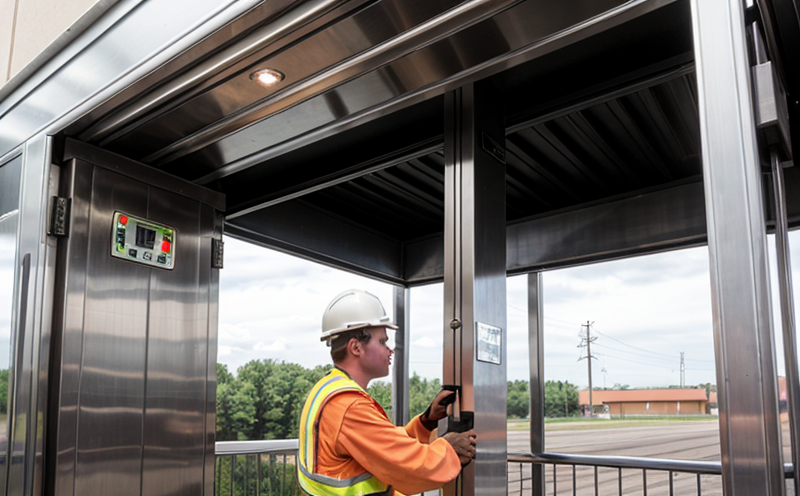Elevator counterweight inspection
The elevator counterweight is a critical component in an elevator system, designed to balance the load and reduce energy consumption. Regular inspections ensure that this vital part functions optimally, thereby enhancing safety and efficiency. This service focuses on inspecting and assessing the condition of elevator counterweights to ensure they meet regulatory standards and operational requirements.
The inspection process involves a thorough examination of the counterweight's weight, dimensions, materials, and overall integrity. Compliance with international standards such as ISO 18739-2:2015 is paramount for ensuring safety and reliability. The testing also includes assessing wear and tear, checking for any signs of corrosion or damage that could compromise performance.
For quality managers and compliance officers, this inspection service provides peace of mind knowing their elevators are operating within safe parameters. For R&D engineers, it offers insights into potential improvements in design and materials used in counterweights. Procurement professionals can ensure they are sourcing high-quality components by requesting detailed reports from these inspections.
The elevator counterweight plays a crucial role in the overall performance of an elevator system. By ensuring this component is in top condition through regular inspection, we help maintain the integrity of the entire system. This service not only adheres to but often exceeds industry standards, providing assurance that elevators are safe and efficient for daily use.
Accurate and reliable inspections are essential for maintaining compliance with local regulations and international safety protocols. By partnering with us, you can benefit from our expertise in ensuring your elevator counterweights meet the highest standards of quality and safety.
- Comprehensive inspection: Ensures that all aspects of the counterweight are evaluated.
- Regulatory compliance: Adherence to international standards guarantees safe operation.
- Data-driven insights: Provides detailed reports for informed decision-making.
Scope and Methodology
The scope of this inspection service includes a comprehensive assessment of the elevator counterweight to ensure it meets both regulatory requirements and operational needs. The methodology involves several key steps:
- Initial Assessment: Conducting an initial visual inspection to identify any visible signs of wear, corrosion, or damage.
- Weighing: Precise measurement of the counterweight's actual weight compared to its nominal value as per the design specifications.
- Magnetic Particle Inspection (MPI): Utilizing MPI for detecting surface and subsurface flaws in ferromagnetic materials, which is essential for identifying potential issues early on.
- Non-destructive Testing (NDT): Employing advanced NDT techniques to evaluate the internal structure without causing damage. This includes ultrasonic testing, radiographic testing, and eddy current inspection.
The final step involves generating a detailed report summarizing findings, recommendations for necessary repairs or replacements, and compliance with relevant standards such as ISO 18739-2:2015. This ensures that the elevator counterweight is not only in optimal condition but also meets all regulatory requirements.
Industry Applications
The expertise and rigorous testing methods employed in this service extend beyond just ensuring safety; they are instrumental in enhancing operational efficiency. Elevator counterweights significantly impact the energy consumption of an elevator system, making their condition a critical factor for sustainability initiatives.
For quality managers, having reliable data from these inspections allows them to make informed decisions about maintenance schedules and potential upgrades. Compliance officers benefit greatly by ensuring that all aspects of the inspection comply with current regulations, reducing the risk of penalties or non-compliance issues.
R&D engineers can leverage this service to gather valuable insights into improving elevator counterweight designs, using more durable materials, or developing new manufacturing processes. By staying ahead of industry trends and standards, they contribute to safer, more efficient elevators that meet both current and future demands.
For procurement professionals, obtaining detailed inspection reports helps them select suppliers who provide high-quality components. This not only ensures compliance with regulatory standards but also supports long-term sustainability goals by promoting the use of sustainable materials and practices.





